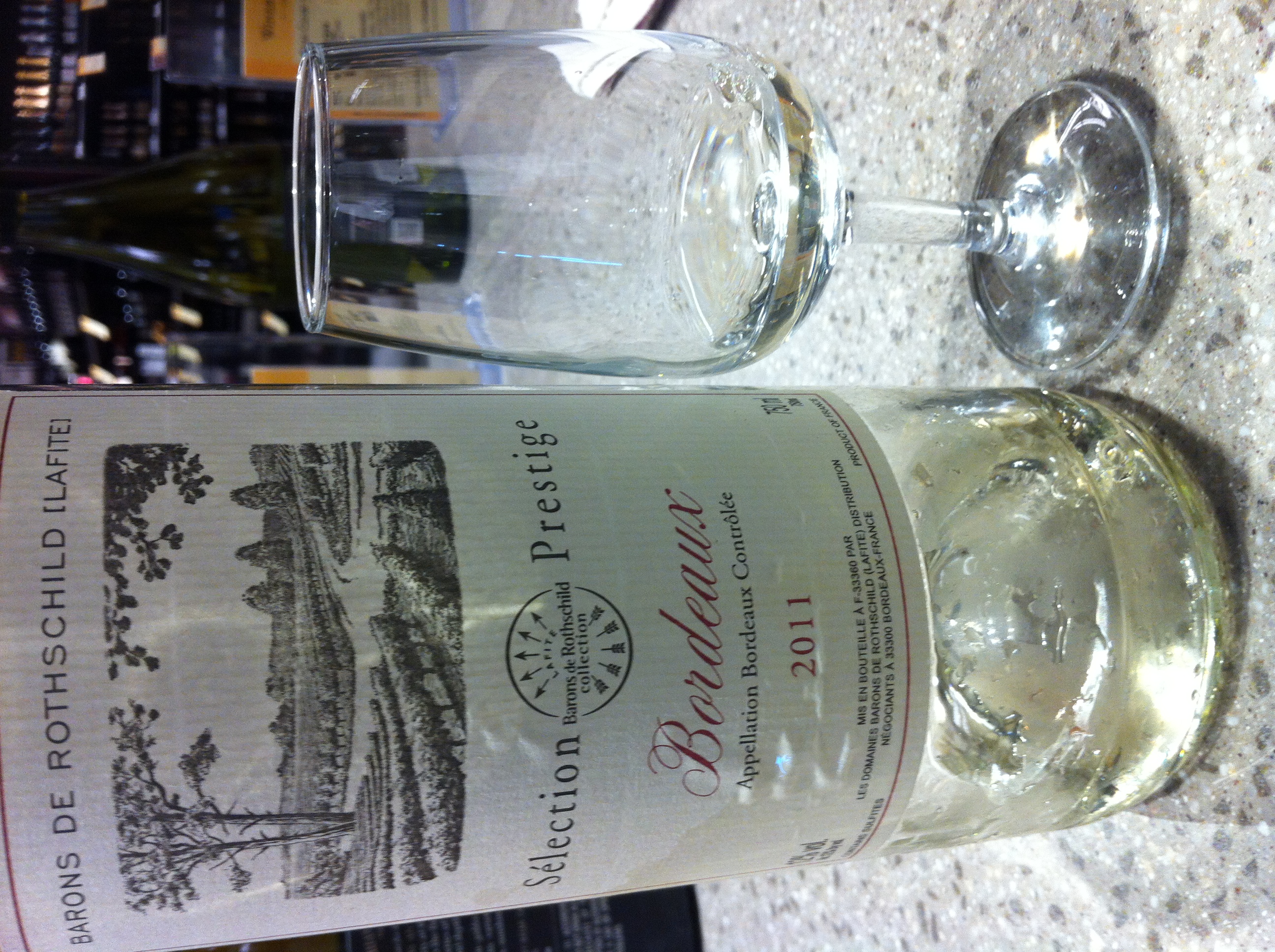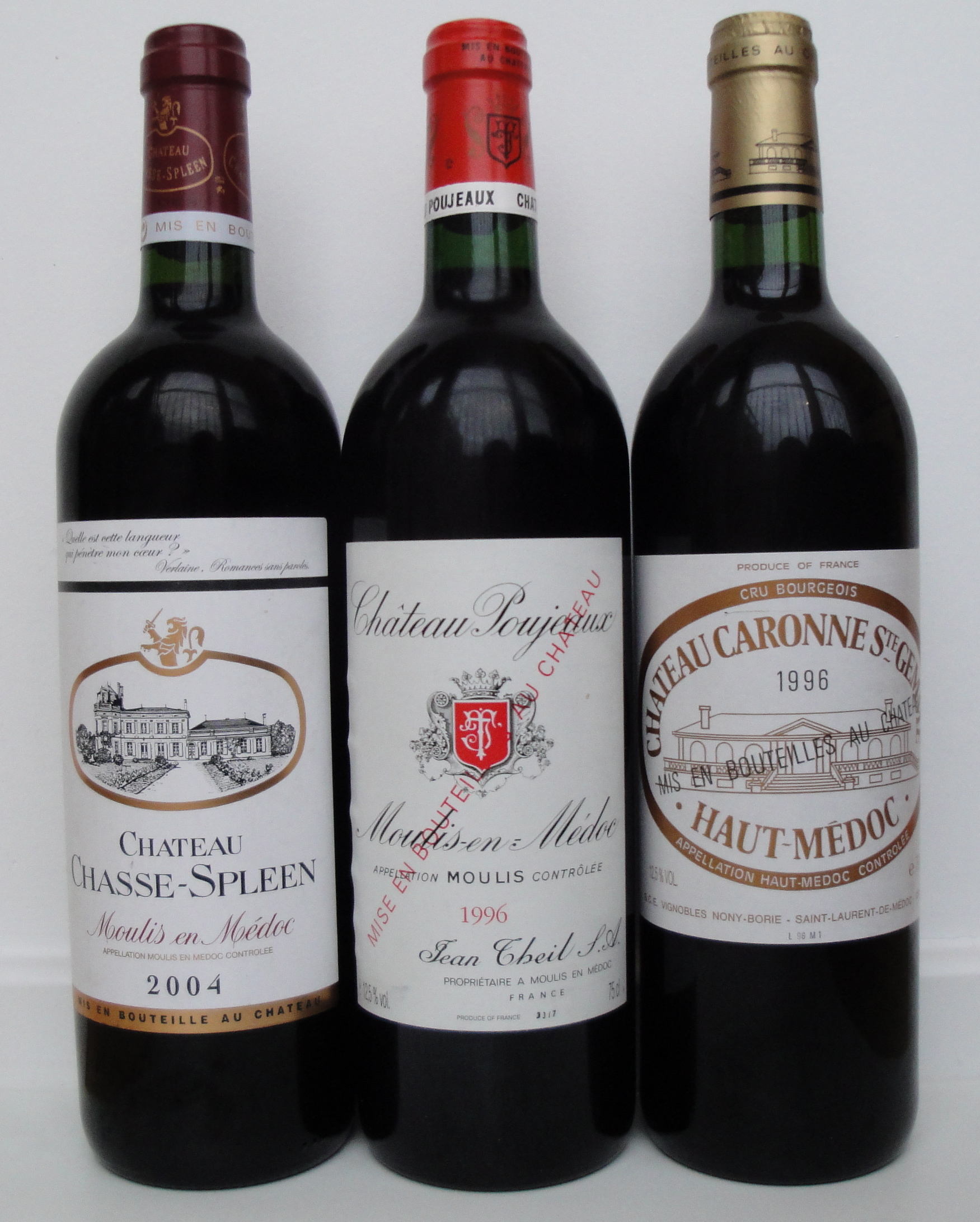|
Château Sociando-Mallet
Château Sociando-Mallet is an unclassed Bordeaux wine producer from the appellation Haut-Médoc. The winery is located on the Left Bank of the Bordeaux wine regions, in the commune of Saint-Seurin-de-Cadourne north of Saint-Estèphe, France. Despite its estimation as a producer of high quality wine, it was neither ranked in the Bordeaux Wine Official Classification of 1855 (not existing at the time), nor is it listed among Médoc's ''Cru Bourgeois'', due to a decision of its owner Jean Gautreau not to enter it for such classification. The winery also produces a second wine named La Demoiselle de Sociando-Mallet. History Situated on what was in 1633 the residence of a Basque nobleman named Sièvre Sociando, the first documentation of the estate mentions its ''nobles terres''. After its acquisition around 1850 by Madame Mallet, it was recorded in the 1883 edition of ''Cocks & Féret'' along with Château Verdignan as the leading ''cru'' of Saint-Seurin. Sociando-Mallet was a ... [...More Info...] [...Related Items...] OR: [Wikipedia] [Google] [Baidu] |
Bordeaux Wine
Bordeaux wine ( oc, vin de Bordèu, french: vin de Bordeaux) is produced in the Bordeaux region of southwest France, around the city of Bordeaux, on the Garonne River. To the north of the city the Dordogne River joins the Garonne forming the broad estuary called the Gironde; the Gironde department, with a total vineyard area of over 120,000 hectares, is the largest wine growing area in France. Average vintages produce over 700 million bottles of wine, ranging from large quantities of everyday table wine, to some of the most expensive and prestigious wines in the world. The vast majority of wine produced in Bordeaux is red (sometimes called "claret" in Britain), with sweet white wines (most notably Sauternes), dry whites, and (in much smaller quantities) rosé and sparkling wines (Crémant de Bordeaux) collectively making up the remainder. Bordeaux wine is made by more than 8,500 producers or ''châteaux''. There are 54 appellations of Bordeaux wine. History Viticulture ... [...More Info...] [...Related Items...] OR: [Wikipedia] [Google] [Baidu] |
Appellation D'origine Contrôlée
An appellation is a legally defined and protected geographical indication primarily used to identify where the grapes for a wine were grown, although other types of food often have appellations as well. Restrictions other than geographical boundaries, such as what grapes may be grown, maximum grape yields, alcohol level, and other quality factors may also apply before an appellation name may legally appear on a wine bottle label. The rules that govern appellations are dependent on the country in which the wine was produced. History The tradition of wine appellation is very old. The oldest references are to be found in the Bible, where ''wine of Samaria'', ''wine of Carmel'', ''wine of Jezreel'', or ''wine of Helbon'' are mentioned. This tradition of appellation continued throughout the Antiquity and the Middle Ages, though without any officially sanctioned rules. Historically, the world's first exclusive (protected) vineyard zone was introduced in Chianti, Italy in 1716 and th ... [...More Info...] [...Related Items...] OR: [Wikipedia] [Google] [Baidu] |
Winery
A winery is a building or property that produces wine, or a business involved in the production of wine, such as a wine company. Some wine companies own many wineries. Besides wine making equipment, larger wineries may also feature warehouses, bottling lines, laboratories, and large expanses of tanks known as tank farms. Wineries may have existed as long as 8,000 years ago. Ancient history The earliest known evidence of winemaking at a relatively large scale, if not evidence of actual wineries, has been found in the Middle East. In 2011 a team of archaeologists discovered a 6000 year old wine press in a cave in the Areni region of Armenia, and identified the site as a small winery. Previously, in the northern Zagros Mountains in Iran, jars over 7000 years old were discovered to contain tartaric acid crystals (a chemical marker of wine), providing evidence of winemaking in that region. Archaeological excavations in the southern Georgian region of Kvemo Kartli uncovered evidenc ... [...More Info...] [...Related Items...] OR: [Wikipedia] [Google] [Baidu] |
Bordeaux Wine Regions
The wine regions of Bordeaux are a large number of wine growing areas, differing widely in size and sometimes overlapping, which lie within the overarching wine region of Bordeaux, centred on the city of Bordeaux and covering the whole area of the Gironde department of Aquitaine. The Bordeaux region is naturally divided by the Gironde Estuary into a Left Bank area which includes the Médoc and Graves and a Right Bank area which includes the Libournais, Bourg and Blaye. The Médoc is itself divided into Haut-Médoc (the upstream or southern portion) and Bas-Médoc (the downstream or northern portion, often referred to simply as "Médoc"). There are various sub-regions within the Haut-Médoc, including St-Estèphe, Pauillac, St.-Julien and Margaux and the less well known areas of AOC Moulis and Listrac. Graves includes the sub-regions of Pessac-Léognan and Sauternes (among others), and Sauternes in turn includes the sub-region of Barsac. The Libournais includes the sub-regio ... [...More Info...] [...Related Items...] OR: [Wikipedia] [Google] [Baidu] |
Saint-Seurin-de-Cadourne
Saint-Seurin-de-Cadourne (; Gascon: ''Sent Seurin de Cadorna'') is a commune in the Gironde department in Nouvelle-Aquitaine in southwestern France. Population See also *Communes of the Gironde department The following is a list of the 535 Communes of France, communes of the Gironde Departments of France, department of France. The communes cooperate in the following Communes of France#Intercommunality, intercommunalities (as of 2020): References Communes of Gironde {{Gironde-geo-stub ...[...More Info...] [...Related Items...] OR: [Wikipedia] [Google] [Baidu] |
Saint-Estèphe, Gironde
Saint-Estèphe (; oc-gsc, Sent Estèfe) is a commune in the Gironde department in Nouvelle-Aquitaine in southwestern France. Geography The village lies northwest of Bordeaux. Population Wine Saint-Estèphe is best known as the northernmost, and one of the four major wine-growing appellations of the Médoc. The area is separated from Château Lafite-Rothschild in Pauillac to the south by the Jalle de Breuil stream and its vineyards cover around on the banks of the Gironde estuary. The grounds of St.-Estèphe are varied centered in Château Phélan-Ségur. To the south-east corner of the appellation area, they are similar to those of Pauillac, with deep gravels lying on a hard sandstone base. Progressively to the west and north, they get more clayey, less gravelly, and become heavier. In parts, veins of ''alios'' (a reduced form of iron) can be found.Clive Coates MW in ''An Encyclopaedia Of The Wines And Domaines Of France'', p. 68, Cassel & Co., 2000 - The layers of g ... [...More Info...] [...Related Items...] OR: [Wikipedia] [Google] [Baidu] |
Bordeaux Wine Official Classification Of 1855
The Bordeaux Wine Official Classification of 1855 resulted from the 1855 Exposition Universelle de Paris, when Emperor Napoleon III requested a classification system for France's best Bordeaux wines that were to be on display for visitors from around the world. Brokers from the wine industry ranked the wines according to a château's reputation and trading price, which at that time was directly related to quality. The wines were ranked in importance from first to fifth growths ('' crus''). All of the red wines that made it on the list came from the Médoc region except for one: Château Haut-Brion from Graves. The white wines, then of much less importance than red wine, were limited to the sweet varieties of Sauternes and Barsac and were ranked only from superior first growth to second growth. Changes to the classification Within each category, the various châteaux are ranked in order of quality and only twice since the 1855 classification has there been a change: first wh ... [...More Info...] [...Related Items...] OR: [Wikipedia] [Google] [Baidu] |
Médoc
The Médoc (; oc, label= Gascon, Medòc ) is a region of France, well known as a wine growing region, located in the ''département'' of Gironde, on the left bank of the Gironde estuary, north of Bordeaux. Its name comes from ''(Pagus) Medullicus'', or "country of the ''Medulli''", the local Celtic tribe. The region owes its economic success mainly to the production of red wine; it is home to around 1,500 vineyards. The area also has pine forests and long sandy beaches. The Médoc's geography is not ideal for wine growing, with its proximity to the Atlantic Ocean resulting in a comparatively mild climate and high rainfall making grape rot a constant problem. It is generally believed that the nature of the region's wine derives from the soil; although the terrain is flat, excellent drainage is a necessity and the increased amount of gravel in the soil allows heat to be retained, encouraging ripening, and extensive root systems. Viticulture With the exception of Château Haut ... [...More Info...] [...Related Items...] OR: [Wikipedia] [Google] [Baidu] |
Cru Bourgeois
The Cru Bourgeois classification lists some of the châteaux from the Médoc that were not included in the 1855 Classification of ''Crus Classés'', or Classed Growths. Notionally, ''Cru Bourgeois'' is a level below ''Cru Classé'', but still of high quality (formerly there were additional grades of ''Cru Artisan'' and ''Cru Paysan''). Many wine writers consider that there is some overlap in quality between the Classed Growths and the Cru Bourgeois, although also saying that by and large the Classed Growths still represent the best wines. The first Cru Bourgeois list was drawn up by the Bordeaux Chamber of Commerce and Chamber of Agriculture in 1932, selecting 444 estates for the classification. The words ''Cru Bourgeois'' were widely used on labels by the châteaux so listed, although the classification was never officially ratified. A substantial revision of the classification, dividing it into three tiers, was initiated in 2000 and finalised in 2003. This reduced the number o ... [...More Info...] [...Related Items...] OR: [Wikipedia] [Google] [Baidu] |
Second Wine
Second wine or second label ( French: ''Second vin'') is a term commonly associated with Bordeaux wine to refer to a second label wine made from '' cuvee'' not selected for use in the ''Grand vin'' or first label. In some cases a third wine or even fourth wine is also produced. Depending on the house winemaking style, individual plots of a vineyard may be selected, often those of the youngest vines, and fermented separately, with the best performing barrels being chosen for the house's top wine and the other barrels being bottled under a separate label and sold for a lower price than the ''Grand vin''. In less favorable vintages, an estate may choose to release only a second label wine rather than to release a smaller than normal quantity of its ''Grand vin'' or a wine that would not be consistent with past vintages under that name. The practice has its roots in the 18th century but became more commercially prominent in the 1980s when consumers discovered these wines as a more af ... [...More Info...] [...Related Items...] OR: [Wikipedia] [Google] [Baidu] |
Cocks & Féret
''Cocks & Féret'' or simply ''Féret'', is the colloquial name of a Bordeaux wine directory originally created by Charles Cocks and Michel-Édouard Féret in 1846, which was published under the name ''Bordeaux, its Wines and the Claret Country'' and translated into French and published as the first edition of ''Bordeaux et ses vins'' in 1850.winepros.com.au. It is regarded as the classic reference work on Bordeaux wines, and is to date considered the most comprehensive information source on Bordeaux' wineries.winepros.com.au. amazon.co''Bordeaux and Its Wines'' 15th edition, Hugh Johnson preface/ref> History Jean-Baptiste Féret founded the publishing house La Librairie Féret in Bordeaux in 1812, which became Féret et fils in 1841. In 1846 Michel-Édouard Féret approached Charles Cocks, an English schoolmaster and wine enthusiast living in Bordeaux since 1840, to publish a directory of wine aimed at his compatriots. At 84 pages containing historical observations and assessmen ... [...More Info...] [...Related Items...] OR: [Wikipedia] [Google] [Baidu] |



_b_069.jpg)

